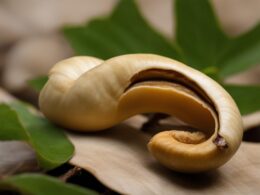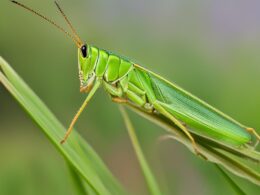Maple tree helicopters, also known as samaras, can create quite a mess in your yard. Whether they are scattered on your patio, deck, or in your garden beds, dealing with the aftermath can be a tedious task. However, with the right strategies, you can effectively clean up the maple seeds and minimize the mess they create.
If you find maple seeds on your patio or deck, a simple rake or broom can quickly remove them. Sweeping or raking the area will gather the seeds into a pile for easy disposal. On concrete surfaces, a shop vacuum can be used to suck up the pesky helicopters.
But what if the seeds have fallen into your pond or on a gravel path? Cleaning up these areas may require a different approach. If the seeds are in your pond, using a pond vacuum can make the job easier, ensuring that no debris is left behind. On a gravel path, hand plucking the seeds may be necessary, as they can be challenging to remove with a rake or broom.
In garden beds or mulch, you have the option to leave the seeds as organic material if you don’t mind the appearance or consider hand pulling them later. This natural decomposition can benefit the soil in the long run. However, if you prefer a cleaner bed or mulch area, manually removing the seeds is recommended.
To prevent a large cleanup in the first place, you can take proactive measures. As the maple seeds begin to fall, you can drape a sheet or tarp underneath the trees to catch them before they scatter. Make sure to weigh down the sheet and periodically gather it up to prevent the seeds from blowing into your garden. Dispose of the collected seeds somewhere other than the compost heap to prevent unwanted growth.
By following these strategies, you can effectively clean up maple seeds and keep your yard tidy. Remember, preventing the mess is always easier than dealing with the aftermath. Now, let’s explore other ways to manage maple tree helicopters and reduce their impact on your outdoor space.
Managing Maple Tree Helicopters
If you want to reduce the number of maple tree helicopters in your yard, there are several strategies you can implement. By pruning your maple trees and utilizing growth regulators, you can effectively manage seed production. Additionally, taking proactive measures to handle maple seedlings can prevent them from growing into larger trees.
Pruning Maple Trees
Pruning your maple trees can help reduce the production of helicopters. It is important to prune correctly and at the right time to avoid damaging the tree. Hiring a professional arborist can ensure that the pruning is carried out effectively and safely.
Using Growth Regulators
Growth regulators can be used to manage the maple tree’s seed production. However, it’s essential to note that these regulators may also impact the overall health and growth of the tree. Consulting with an expert is crucial to establish the appropriate usage and potential effects on your maple trees.
Managing Maple Seedlings
Once most of the maple tree helicopters have fallen, it’s time to start the cleanup process. Using a garden rake on a dry day, collect the fallen helicopters from your yard. You can add them to your compost pile or dispose of them in the green waste bin.
If you notice maple seedlings sprouting in your yard, regular mowing can help prevent them from growing into larger trees. For seedlings that manage to establish themselves in garden beds, manual removal is usually the best approach.
By implementing these strategies for managing maple tree helicopters, you can reduce their presence in your yard and maintain a tidy outdoor environment.
Choosing the Right Maple Tree and Conclusion
When it comes to managing maple tree helicopters and maintaining a tidy yard, selecting the right maple tree species is key. Different maple tree species produce varying amounts of helicopters, allowing you to choose a tree that aligns with your preferences and reduces cleanup efforts. Sugar maples are known for their abundant seed production, while red maples produce a moderate amount. On the other hand, Japanese maples yield fewer helicopters.
If you want to avoid the mess of helicopters in your yard, consider planting a maple tree species that produces fewer seeds. By opting for a tree like the Japanese maple, you can minimize the amount of cleanup required, keeping your lawn clean and hassle-free.
While maple tree helicopters may seem like a nuisance, they actually serve an important purpose in the tree’s life cycle and the overall health of the species. The seeds carried by the helicopters contribute to the tree’s reproduction and ensure its survival. It is crucial to understand the significance of these helicopters and appreciate their role in nature.
By planting the right maple tree species and implementing effective strategies to manage helicopters, you can strike a balance between aesthetics and nature’s processes. Achieving a tidy yard while maintaining the importance of maple tree helicopters is possible with proper tree selection and management techniques.
Can Maple Tree Helicopters Attract Bees to Nest in Trees and How to Prevent It?
Maple tree helicopters can attract bees to nest in trees due to their natural appeal to bees for building hives. To prevent bees from nesting, consider trimming branches and sealing tree cracks. Additionally, try planting bee-repelling plants nearby. For specific bees nest removal tips, consult a professional pest control service.








